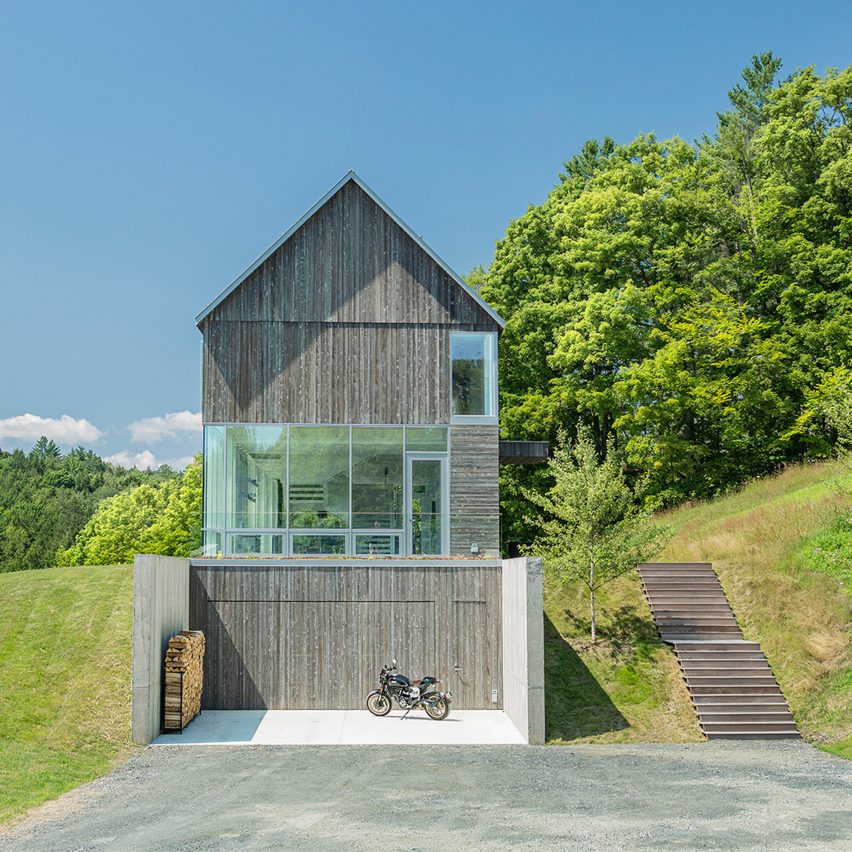
Weathered cedar covers this Vermont house, which local studio Birdseye Design built into a grassy slope to take cues from nearby barns.
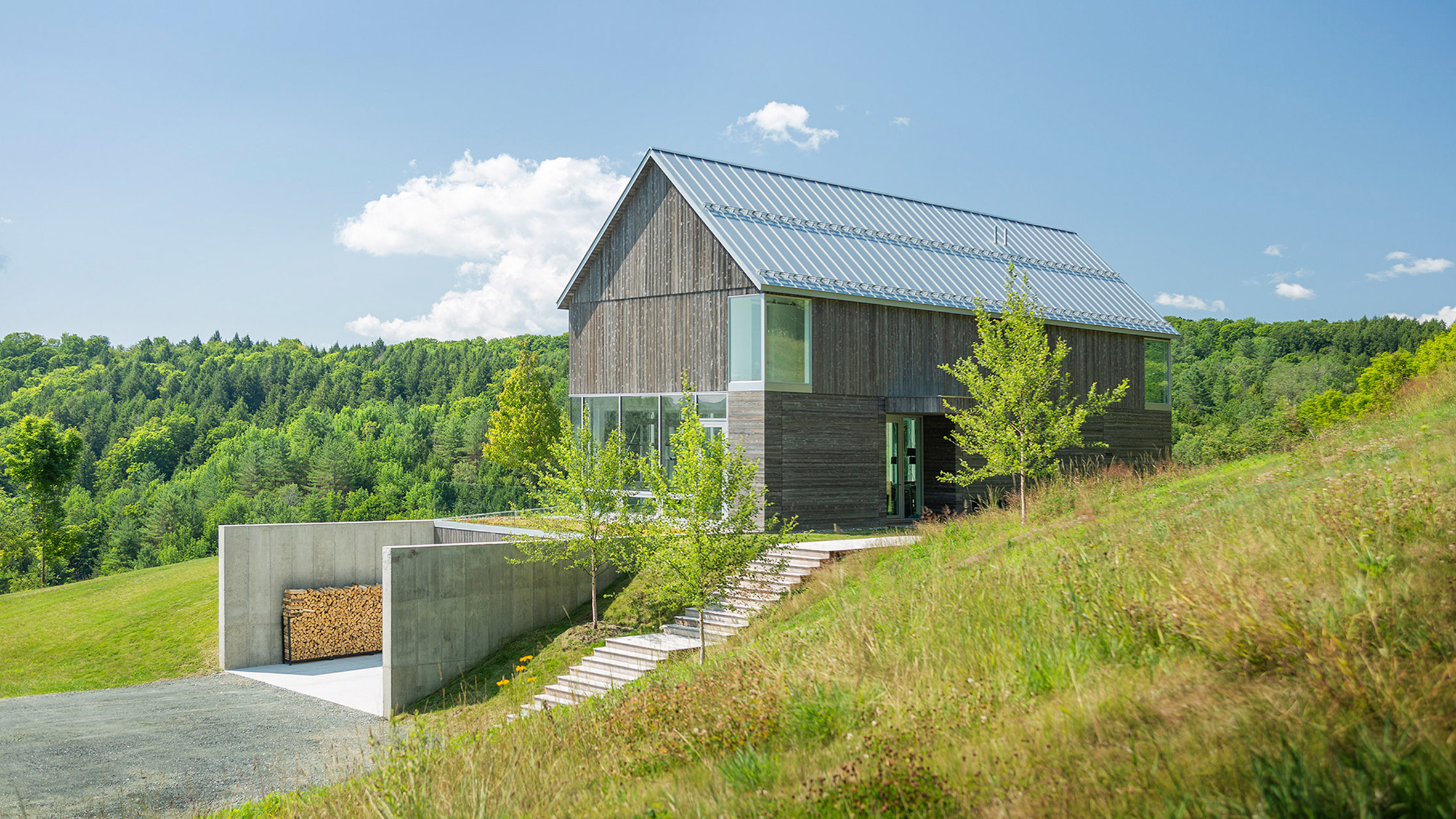
Called Bank Barn, the three-storey home is located Green Mountains of Vermont on a steeply sloping meadow surrounded by 27 acres (11 hectares) of land.
The wood-clad house is designed to take cues from bank barns, which are built into hills and accessible at two different levels.
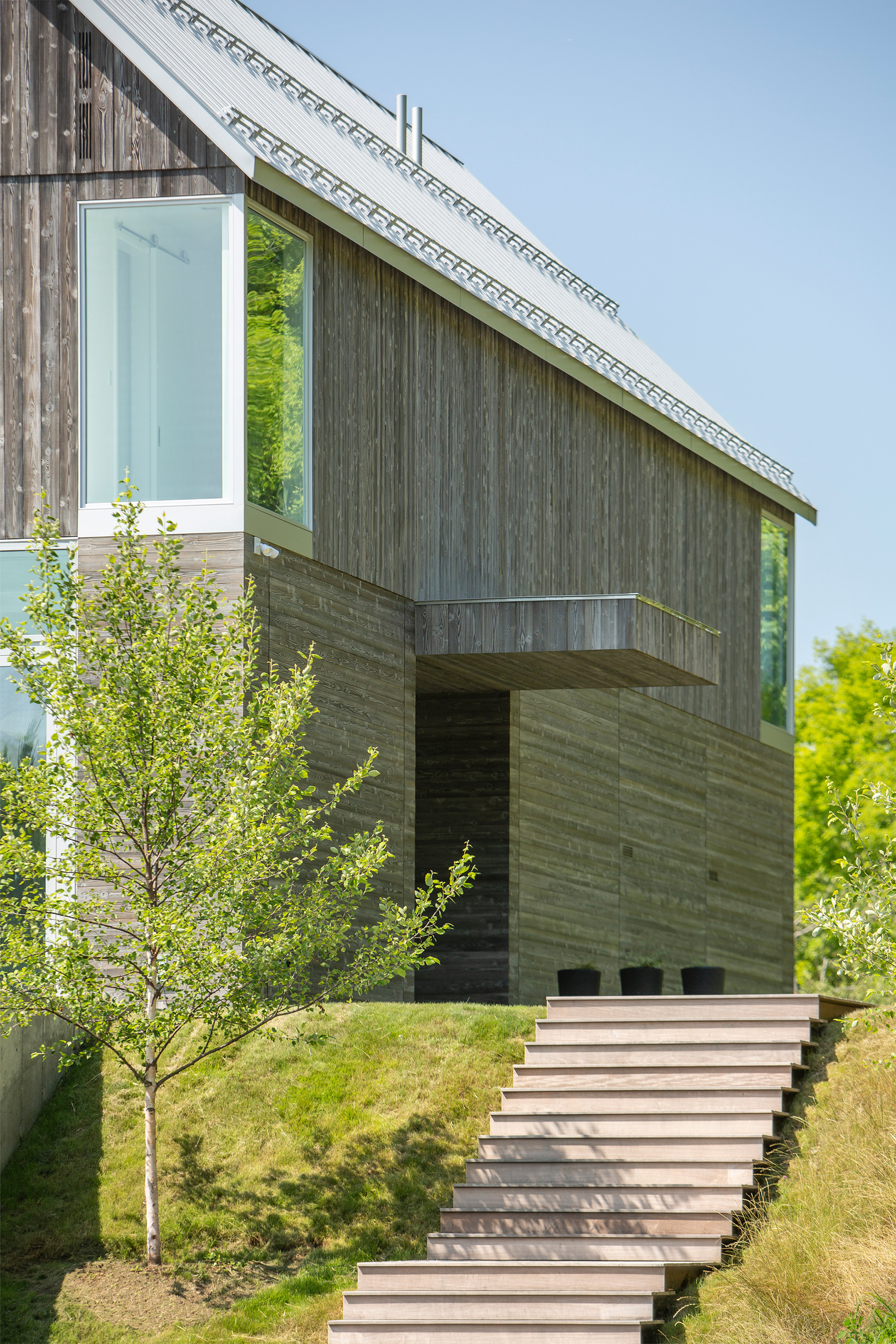
Outdoor wooden steps run alongside the residence and access the front door on the middle floor level.
"Grade transitions are a feature of bank barns and the main entry path accentuates the topography," said build-design studio Birdseye Design.
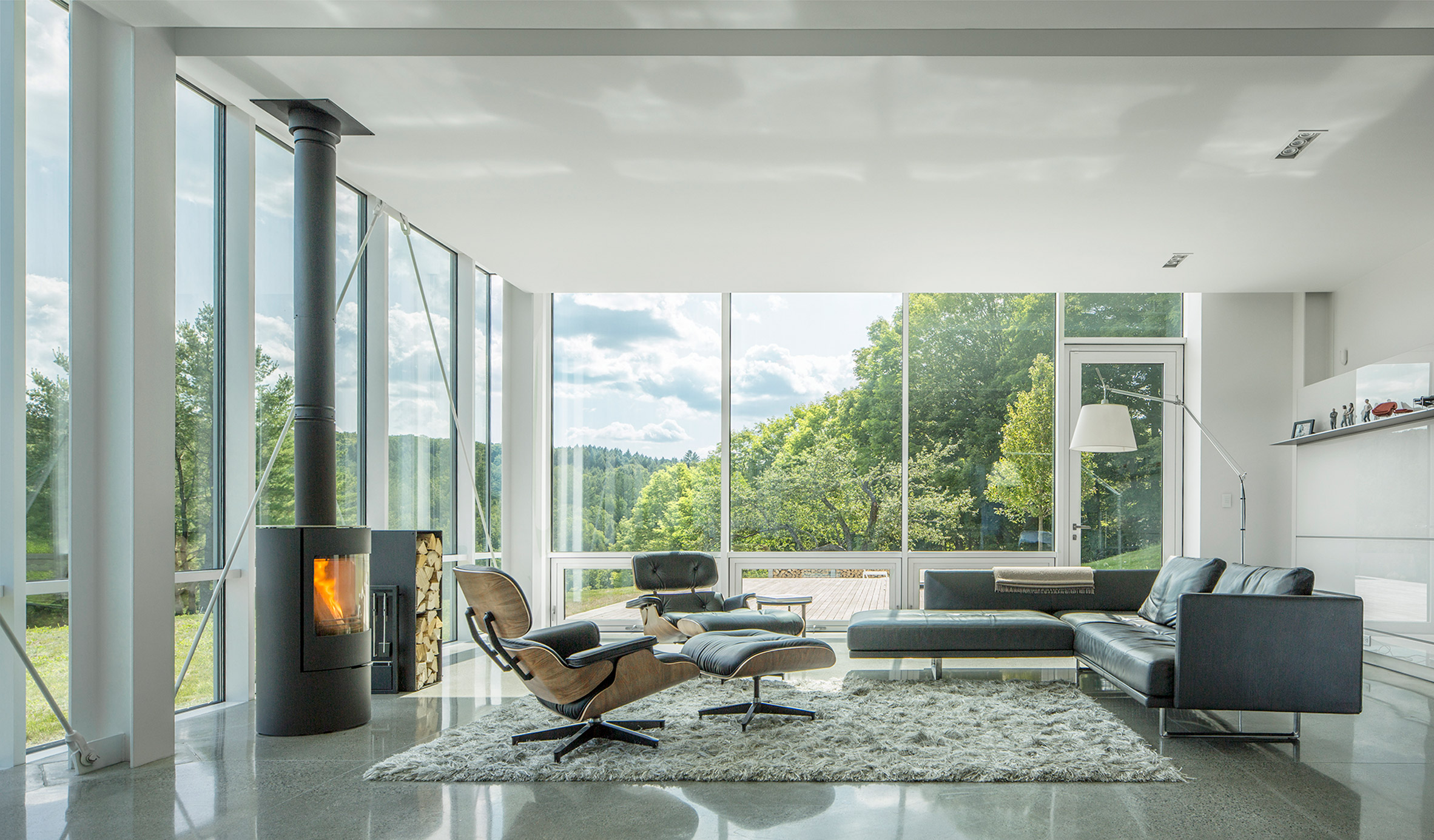
A concrete foundation embeds the house on a flat portion of the hill and projects outwards to form barrier walls on the east and west sides.
Acting like bookends, the concrete encloses a driveway and garage on the one side, and a patio with a firepit further from the dwelling on the opposite.
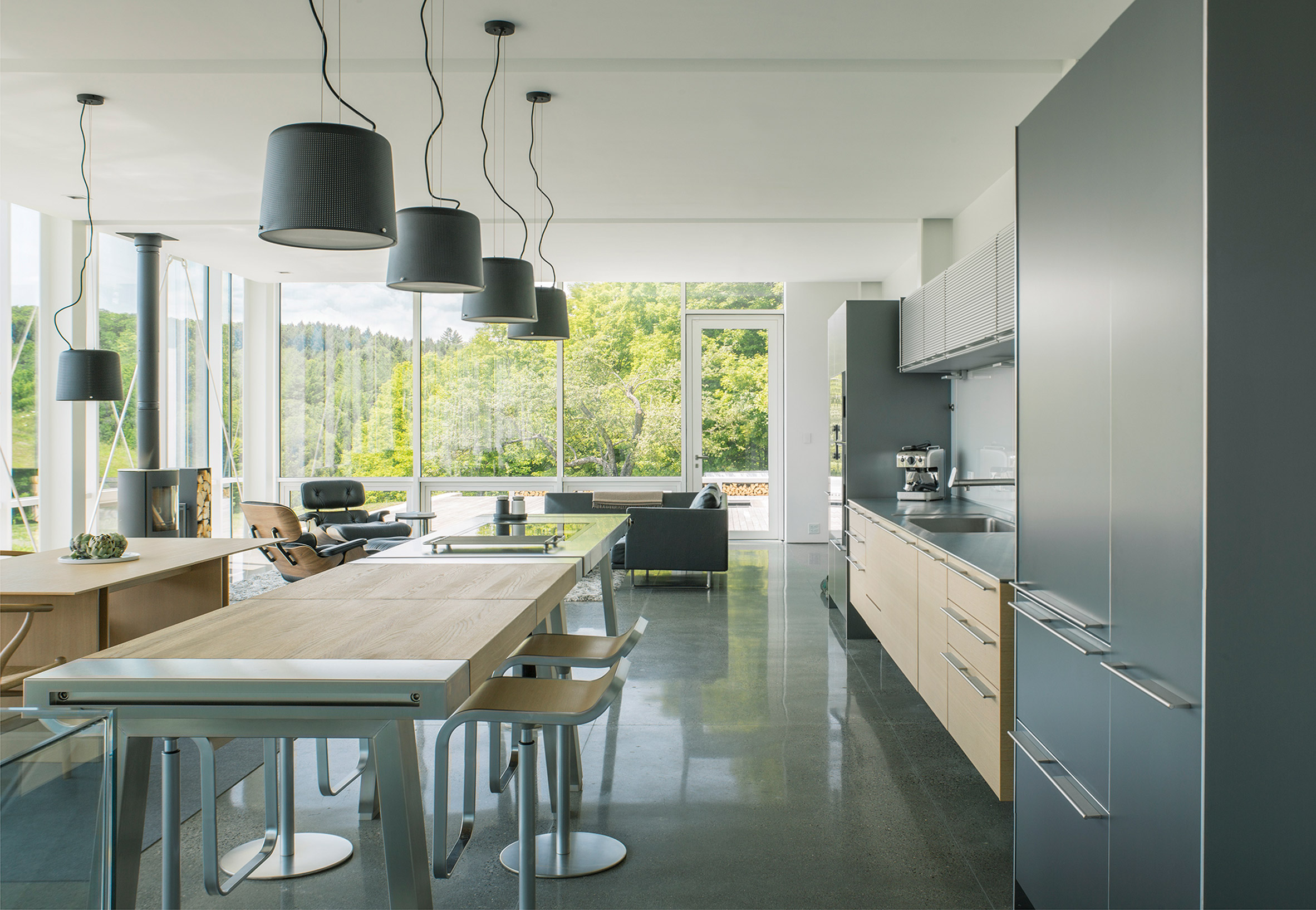
"The flat grade at the upper bench proved to be the ideal site, a natural promenade to the view with an opportunity to embed the house into the landscape with an eastern slope at the arrival point," the studio added.
An open-plan kitchen, living room, dining area and office are located on the middle level. Almost the entire floor is enclosed with glass walls to offer expansive views of outside.
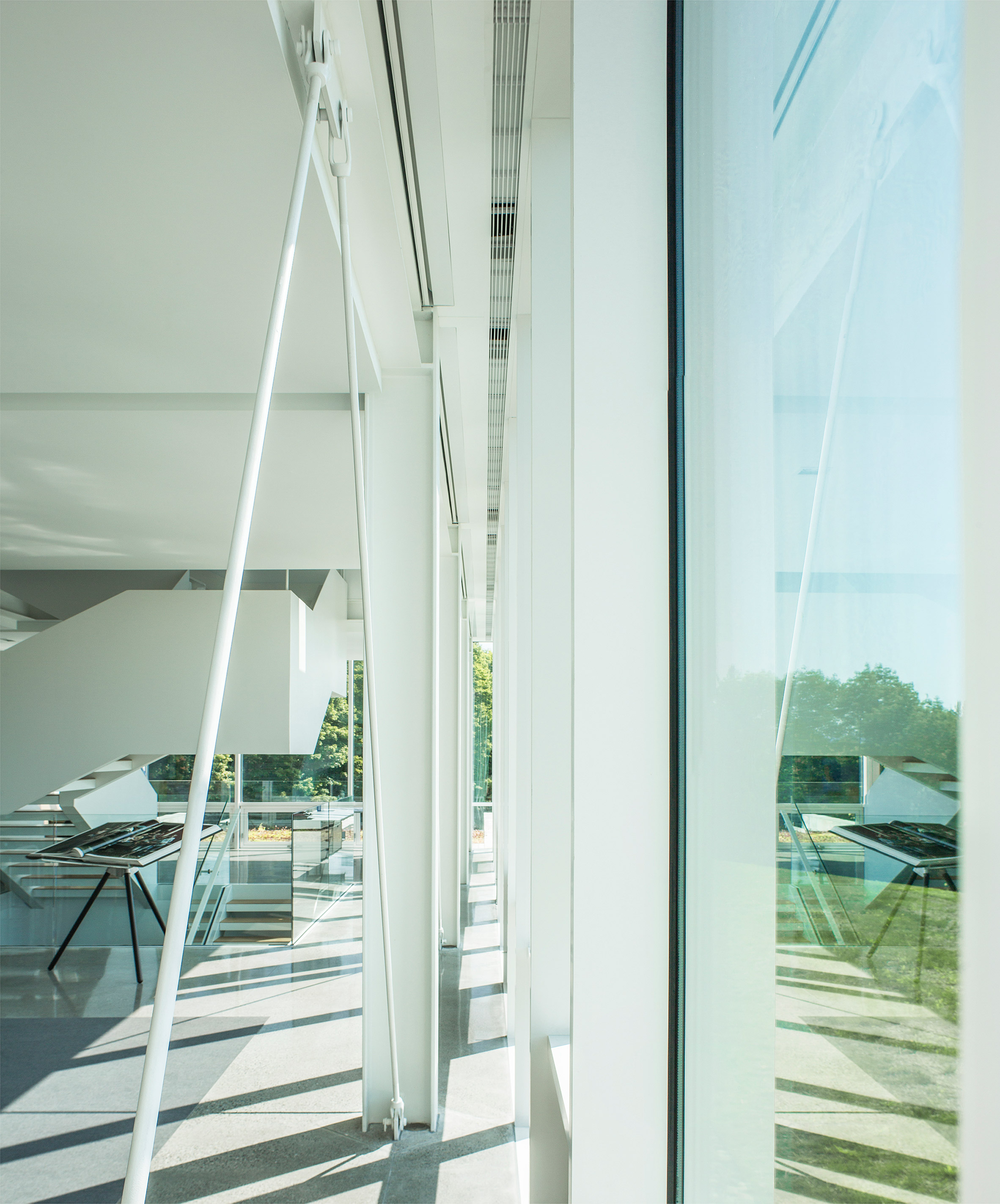
Steel beams and cross-bracing are left exposed and painted white, matching the stark interiors of white walls and grey floors. A free-standing steel staircase is also painted white and has a glass railing.
The bottom floor is mostly concealed by the sloped terrain, aside from a garage door at the front that is clad in wood. A green roof covers a portion of this lower volume as it extends slightly outwards from the two floors above.
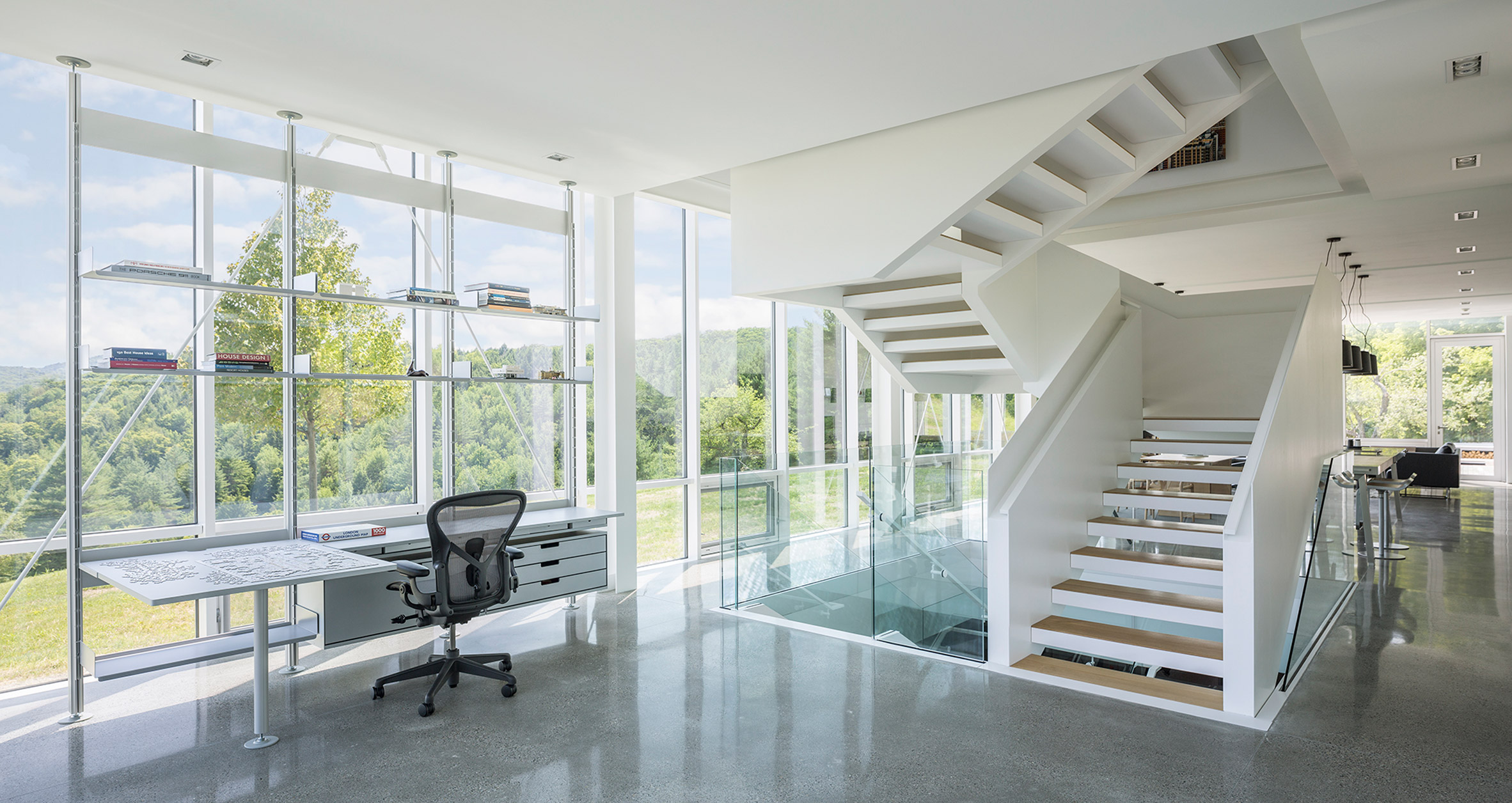
Three bedrooms with en suites and a laundry room are on the top storey. Designed to be more private, this floor has smaller windows with deep jambs to frame the pastoral views.
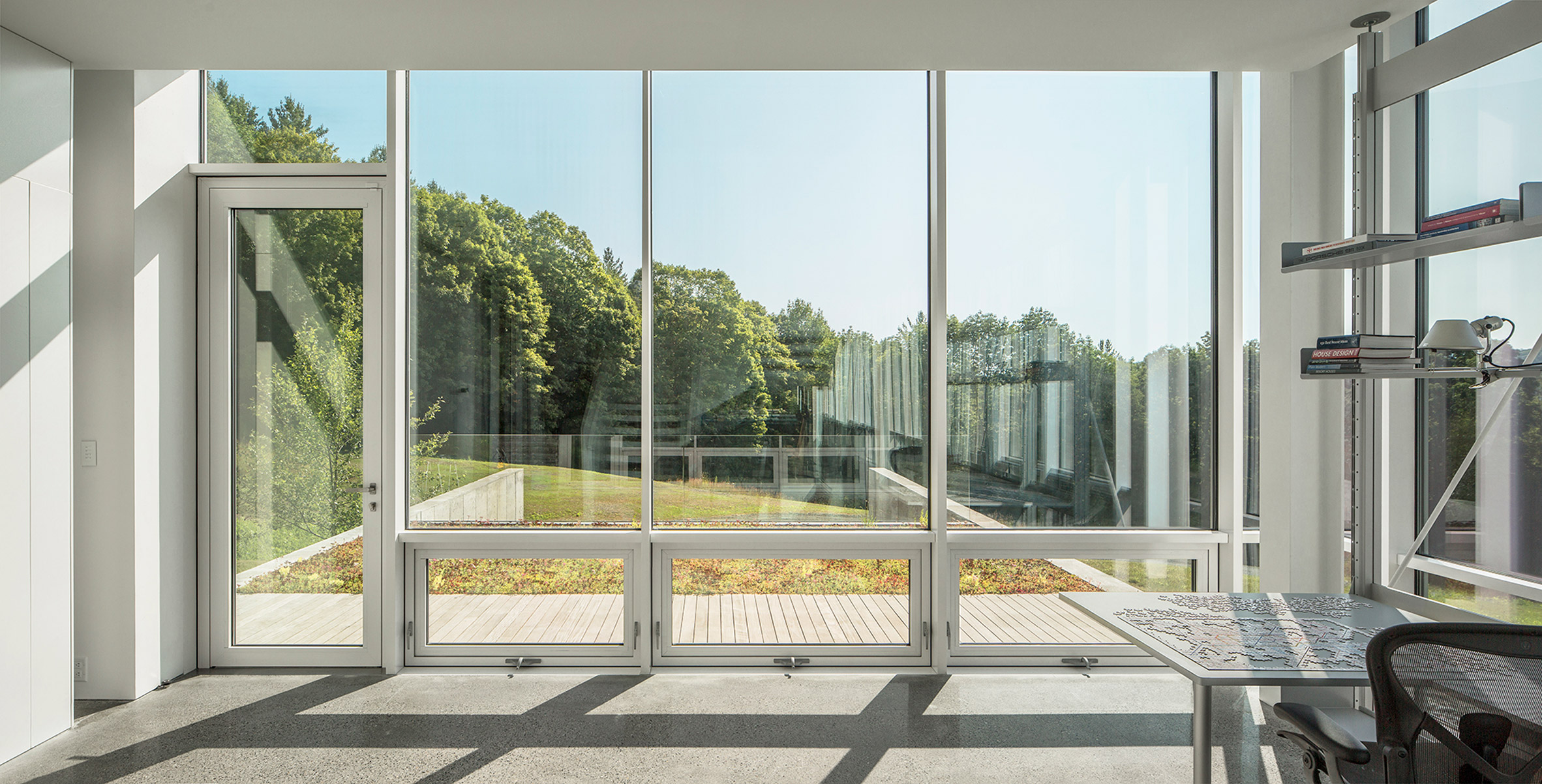
Bank Barn is complete with a number of environmentally friendly design elements. Geothermal wells provide heating and cooling via water-to-water and water-to-air systems, and a triple-glazed curtainwall bolsters the insulation to reduce heat flow during Vermont's freezing winter months.
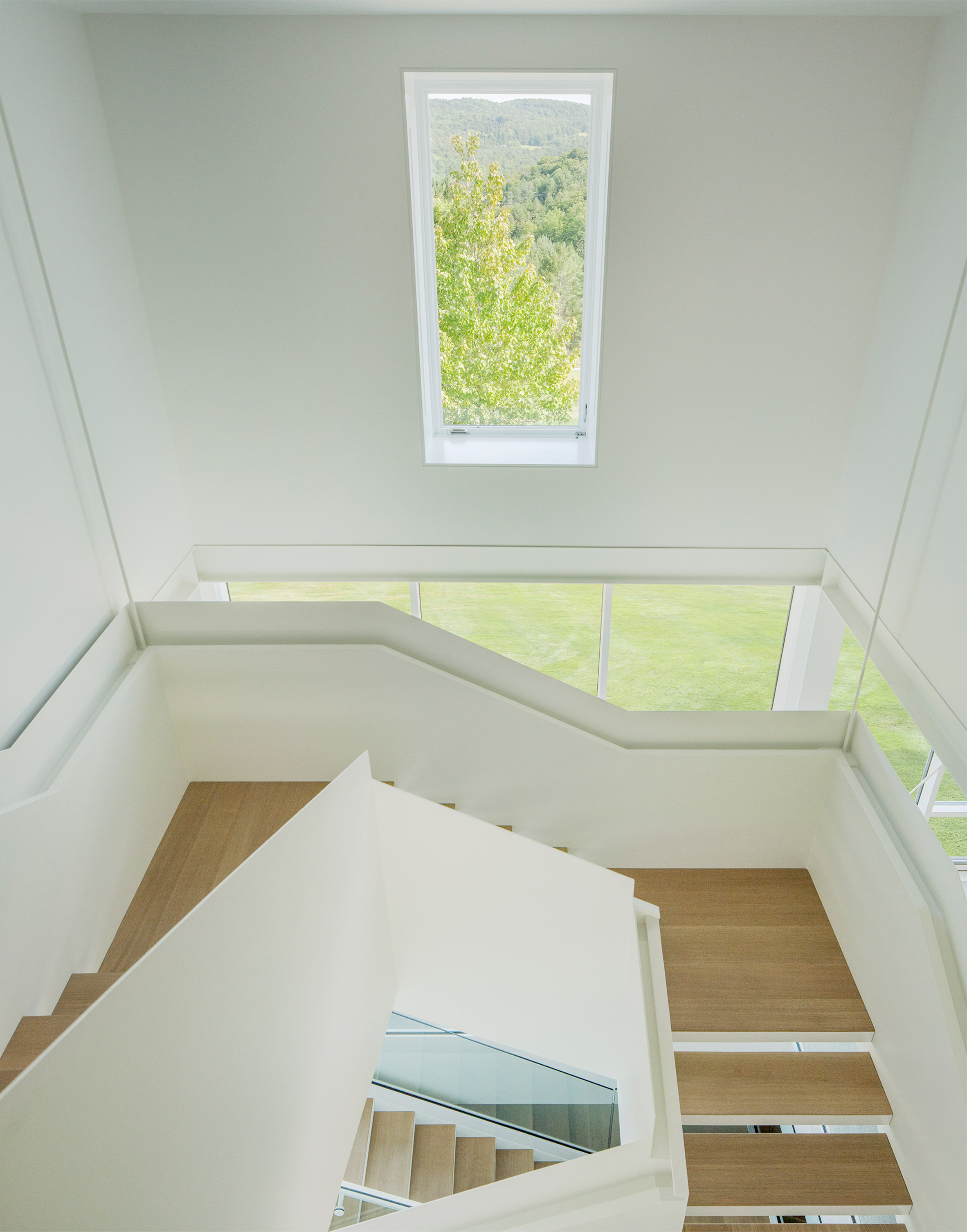
According to Birdseye Design, the home is designed to produce as much energy as it consumes on-site. "The project was designed to be a net-zero residence pending a future 18-kilowatt solar array," it said.
Birdseye Design was founded in 1984 and is led by Jim Converse and John Seibert.
In addition to this home, the Vermont practice has built other houses in the northeastern US state, including a black house with broad eaves, a white dwelling called Two Shed and a wood-clad residence called Woodshed.
Photography is by Jim Westphalen.
Project credits:
Landscape architect: Wagner Hodgson Landscape Architecture
Environmental design: Atelier Ten
Builder: Birdseye
The post Birdseye Design integrates Bank Barn house into Vermont hillside appeared first on Dezeen.
from Dezeen https://ift.tt/3c1hchZ
No comments:
Post a Comment